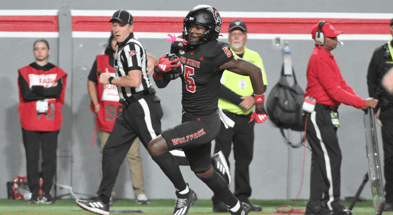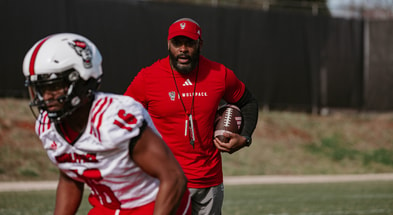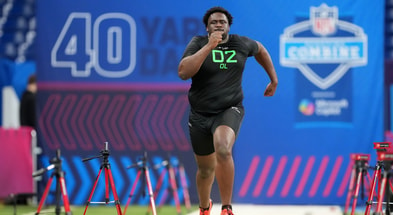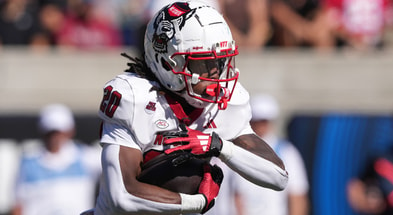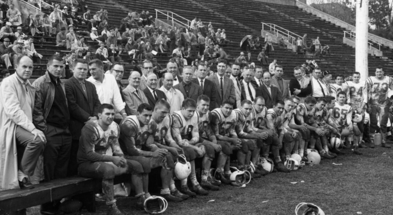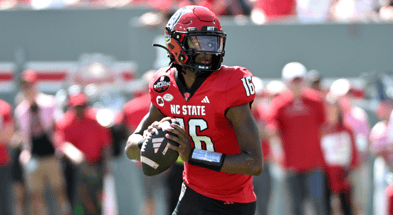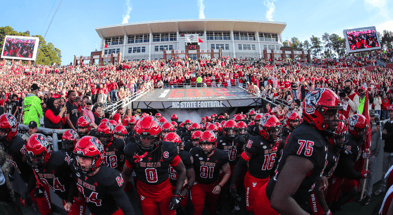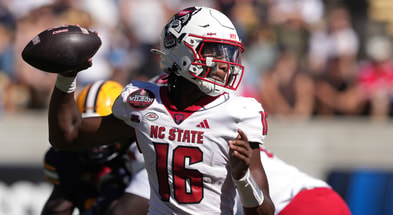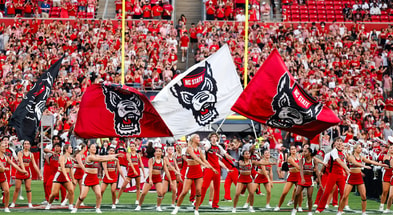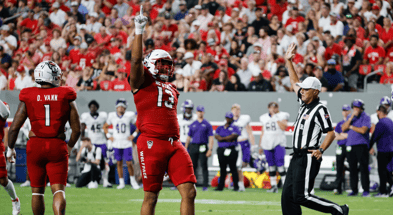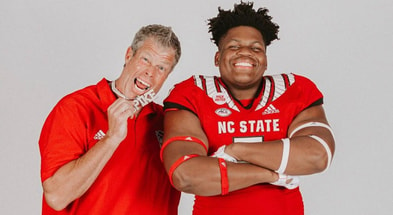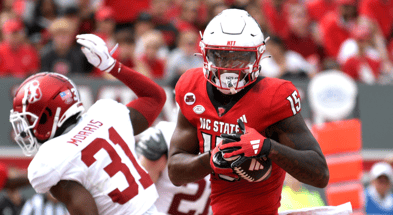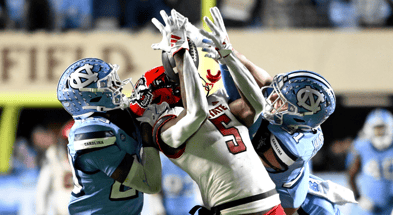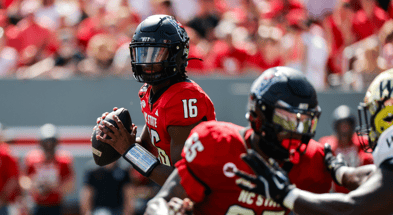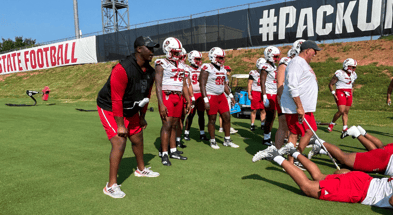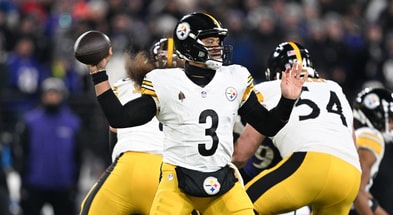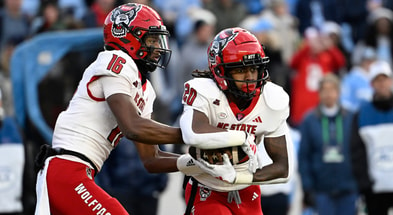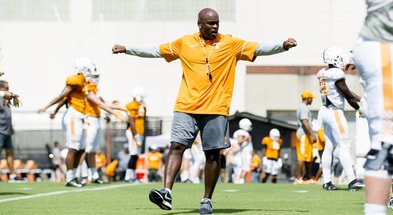Why NC State played Notre Dame in a hurricane in 2016

NC State director of athletics Debbie Yow’s phone rang early on the morning of Saturday, Oct. 8, 2016, with an unexpected name on the caller identification: North Carolina AD Bubba Cunningham.
Someone Yow rarely had social calls from.
“Debbie, this might be the dumbest thing we’ve ever done,” Cunningham told her.
In hindsight, maybe it wasn’t smart for NC State, UNC and Duke to host home games as Hurricane Matthew bore down on the North Carolina coast, bringing winds in excess of 90 miles an hour and a storm surge of more than four feet along the shore and massive rain to the Research Triangle. For good measure, Wake Forest also had a home game that Saturday.
The time for making that decision was long past, however, and Yow needed to get to Carter-Finley Stadium, where the Wolfpack was not only hosting its first-ever game against college football royalty Notre Dame, but the school was celebrating the 50th anniversary of the home of Wolfpack football.
A full day of activity had long been organized to celebrate an edifice designed by a faculty member and built by a graduate and former civil engineering professor. Those plans washed away in rivulets, streams and standing puddles of rain between Thursday evening and Saturday morning.
“All the action leading to that decision was Thursday and Thursday night,” said Yow, who retired in 2020. “The only thing we could do on Saturday was hope none of the players got hurt, the fans were able to make it to and from home, and that we might win the game.”
Why did a decision have to be made so early?
The Fighting Irish, Virginia Tech, Boston College and Syracuse each had to get their teams, equipment and support personnel to North Carolina, which was squarely in the path of what proved to be the season’s strongest and most destructive hurricane.
“Thursday night was our drop-dead time to make a decision,” Yow says. “And we were talking to all the weather people on campus, all the emergency and law enforcement on campus, all the other schools and the people at the Atlantic Coast Conference office.”
With a National Weather Service office on campus, its own meteorologist on site and folks up and down the coast giving their best input, the forecast seemed to be that the majority of the wind from Matthew would likely be gone by early Saturday, with some lingering rain.
“That was a unique situation with all three Triangle schools playing home games,” explained retired ACC Commissioner John Swofford. “The conference office was constantly in touch with the schools, and they were constantly in touch with each other.
“Usually, under potential hurricane situations, from a conference office perspective, you’re not dealing with three potential games within such a small radius that could be affected. We always tried to keep in mind the safety of the team and fans in deciding whether games could be played.
“It’s always a guessing game with Mother Nature. The State-Notre Dame game was hit with the worst conditions, even with the proximity to Durham and Chapel Hill. The schools and the visiting teams were in sync as to whether or not to play.”
There was a suggestion to move the game to Sunday, when the forecast called for a sunny afternoon..
“That was immediately shut down by the first responders,” Yow noted. “They said, ‘This is going to be really bad in the East, no matter what is going on in Raleigh, Durham and Chapel Hill. We won’t be here at all on Sunday. We will be down there, trying to save lives.’
“They thought we were kind of nuts to think about playing on Sunday.”
On Friday, everything changed. The forecasts grew more problematic for Saturday.
Matthew came ashore as a lesser Category 1 hurricane but a major producer of water with a historic rainfall. A total of 16 inches of rain fell on the South Carolina coast, 19 inches on the North Carolina coast and almost seven inches during Saturday at the Raleigh-Durham International Airport.
“That was the most surreal day of my professional life,” said Nate Johnson, the NC State graduate who serves as Carter-Finley’s game-day meteorologist.
“It was an ugly, ugly day,” added three-time NC State graduate Michael Brennan, who sat through three hurricanes during his first year of school in 1999 and went on to become the director of the National Hurricane Center in Miami.
As water gushed through the concrete entries in the Carter-Finley grandstands and the lights above the stadium swayed in the wind, players from both the Wolfpack and Irish looked on in amazement: “Are we playing in this?”
NC State head coach Dave Doeren told his team before they went onto the field for soaking wet warmups to remember their childhoods.
Top 10
- 1New
Final Four game times
Tip times, TV announced
- 2
Johni Broome vs. UF
Auburn star updates status for Final Four
- 3Hot
Baseball Top 25 projection
More shakeup coming
- 4
Auburn vs. Florida odds
Opening line set for Final Four matchup
- 5
Jay Bilas calls out
Reaction to Willard hiring
Get the On3 Top 10 to your inbox every morning
By clicking "Subscribe to Newsletter", I agree to On3's Privacy Notice, Terms, and use of my personal information described therein.
“When we were little kids when it rained we couldn’t wait to play in the mud,” Doeren told them. “That’s what kids do, and that’s what we’re going to do.”

Since the game started at noon and was nationally televised, the game conditions captured the college football world’s attention.
“Everyone was watching nationally — most in disbelief,” said former athletics director of communication Fred Demarest. “I got so many texts during that game from people who rarely ever see or watch NC State.
“The conditions didn’t seem as bad later at UNC, Duke or Wake.”
All of those games had some rainfall, but nothing like what happened in Raleigh.
Throughout the Wolfpack game, NC State churned out what they could on the grass, and Notre Dame stubbornly tried to pass, Wolfpack players seemed to relish the conditions, sliding “Bull Durham”-like from yardline to yardline, especially when it became apparent they would upset football’s biggest brand for the second time in a row. The first was in the 2003 Gator Bowl.
The Wolfpack won the game 10-3 and celebrated by splashing all over the turf, while rain fell and winds howled around the few hearty fans who stayed in the stadium throughout the soggy game.
“That was probably the most fun game I’ve ever played in,” said senior running back Matthew Dayes, who splashed for 134 yards on 23 carries and outgained the entire Notre Dame offense by 21 yards.
The game turned on one big play, made by junior tight end Pharoah McKeever, who broke through the line and blocked Notre Dame punter Tyler Newsome’s kick into a puddle in the southwest corner of the field.
NC State safety Dexter Wright managed to control the ball and run it in for the game’s only touchdown, figuring that scooping the ball and running was better than falling on it and potentially drowning.
“In the end, it was one stressful and nasty weekend,” Swofford noted.
The game will be remembered as one of the biggest victories in Carter-Finley Stadium, more because of the conditions than anything else. It had an impact on future games. The Wolfpack decided to cancel its Sept. 15, 2018, game against West Virginia in the wake of Hurricane Florence.
The next season, NC State traveled to South Bend, Indiana, to play at Notre Dame for the first time in program history on a day that was cold, gray and touched with sleet. Or what they call in parts of the upper Midwest, “early October.”
“The day before, we were staying well outside of town, and it might be the coldest I have ever been in my life,” Yow remembered.
The next day wasn’t much better for those who traveled to the game, with the Irish winning 35-14.
“You can say all you want about the hurricane game,” Yow said, “but they got us back that day.”
Tim Peeler is a regular contributor to the Wolfpacker and can be reached at [email protected].

